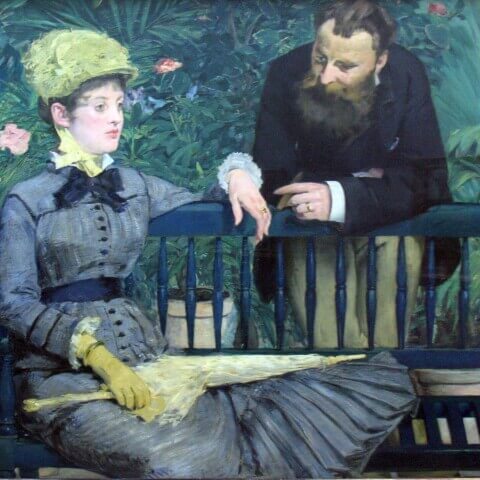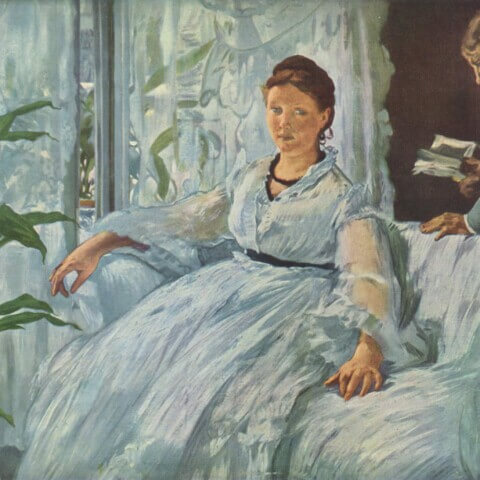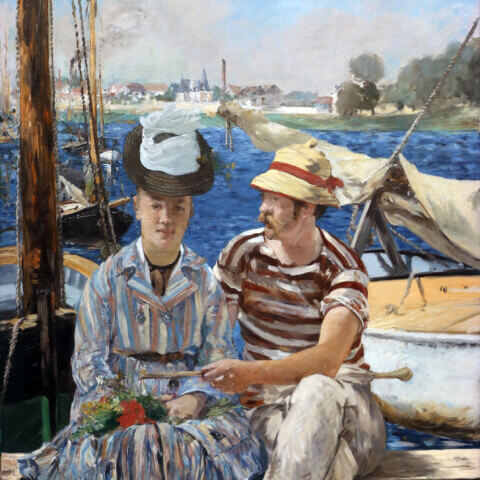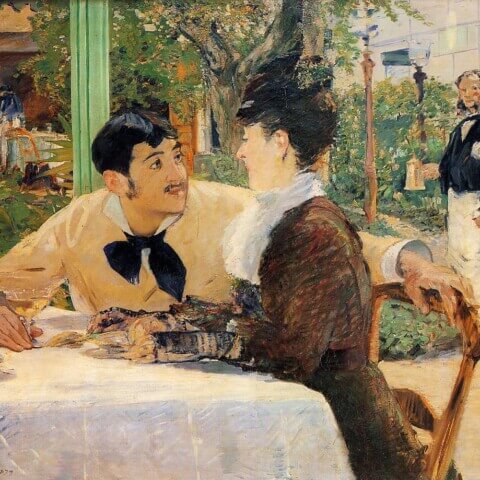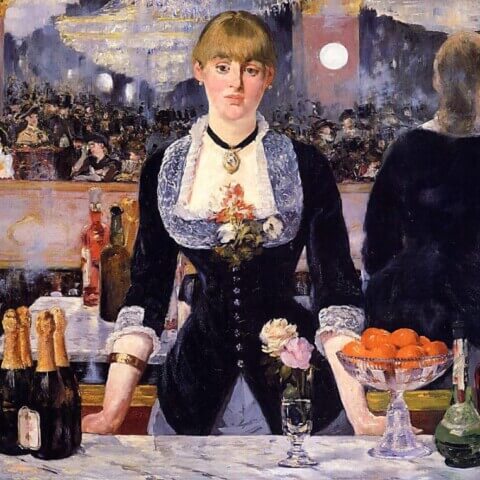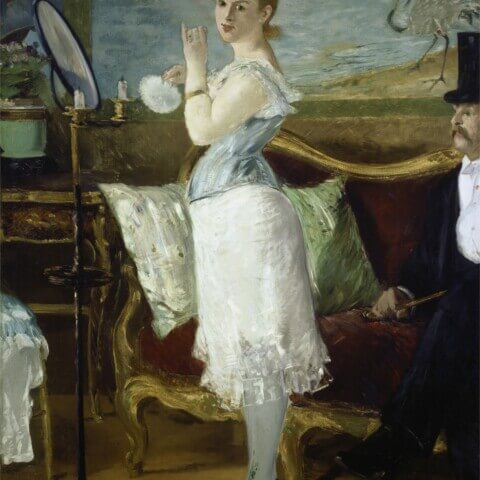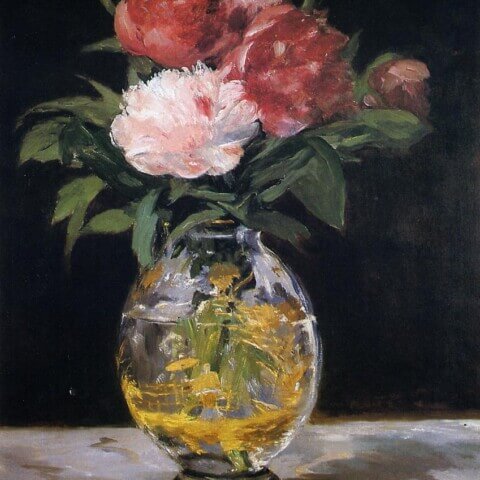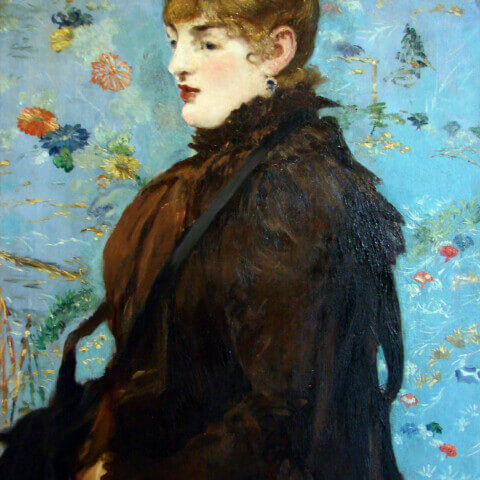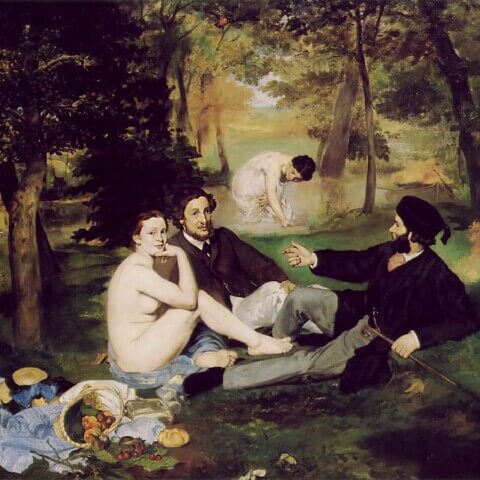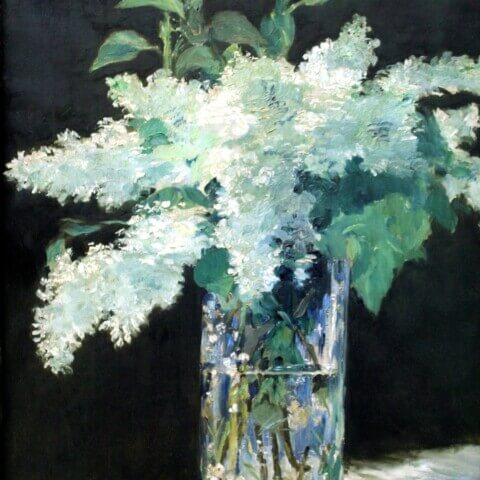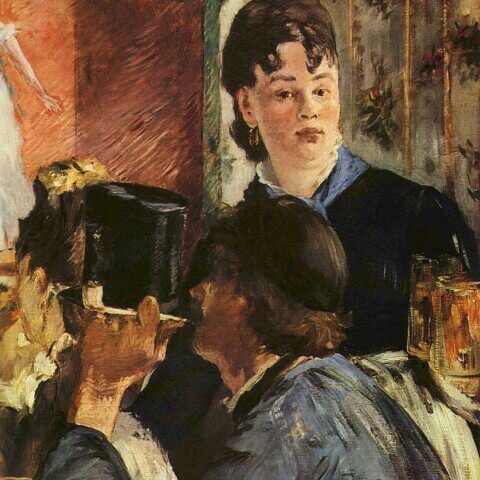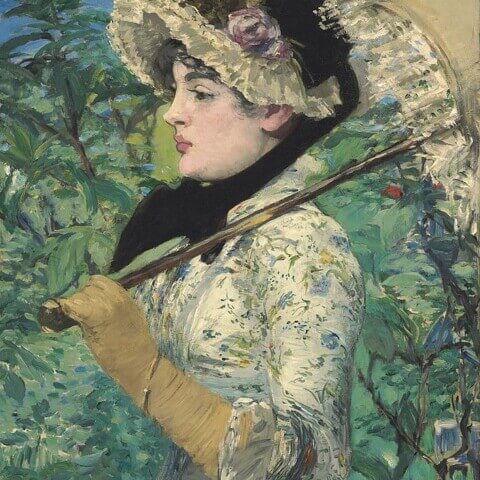Édouard Manet

Édouard Manet (1832-1883) was a pioneering French artist known for his significant contributions to the world of modern art. As a pivotal figure in the transition from Realism to Impressionism, Manet’s innovative works served as a bridge between the art of the past and the future.
Born on January 23, 1832, in Paris, France, into an affluent and well-connected family, Manet had early exposure to the arts. Despite his father’s hopes that he would pursue a career in law, Manet had other ideas and, supported by his uncle, chose to follow his passion for art. His initial studies were under the academic painter Thomas Couture, where he learned the traditional painting techniques.
However, Manet’s true passion was stirred by the works of old masters like Velázquez and Hals, whom he had encountered during his travels in Europe. Their influence is visible in Manet’s bold brushwork, chiaroscuro, and realistic representation of contemporary life.
Manet’s career was marked by controversial works, beginning with “The Absinthe Drinker” in 1859. Later, his two significant paintings, “Olympia” and “Le Déjeuner sur l’herbe,” exhibited in the 1863 Salon des Refusés, stirred scandal due to their unconventional treatment of nudity and everyday subject matter. These works, with their unusual style and provocative themes, made him a central figure in the avant-garde art scene in Paris.
Although Manet’s style is often associated with Impressionism, he chose not to exhibit with the Impressionist group, maintaining a desire for recognition from the traditional Paris Salon. Still, his innovative techniques of color, loose brushwork, and depiction of modern, everyday scenes greatly influenced the Impressionist movement. His later works, including “A Bar at the Folies-Bergère,” reflected these elements and were more accepted by the public and critics alike.
Plagued by health issues in his later years, Manet died in 1883, leaving behind a body of work that would significantly impact future generations of artists. His boldness in disregarding academic conventions, his innovative portrayal of modern life, and his path-breaking painting style have all cemented his place as one of the pivotal figures in the history of art.
- 1
- 2

